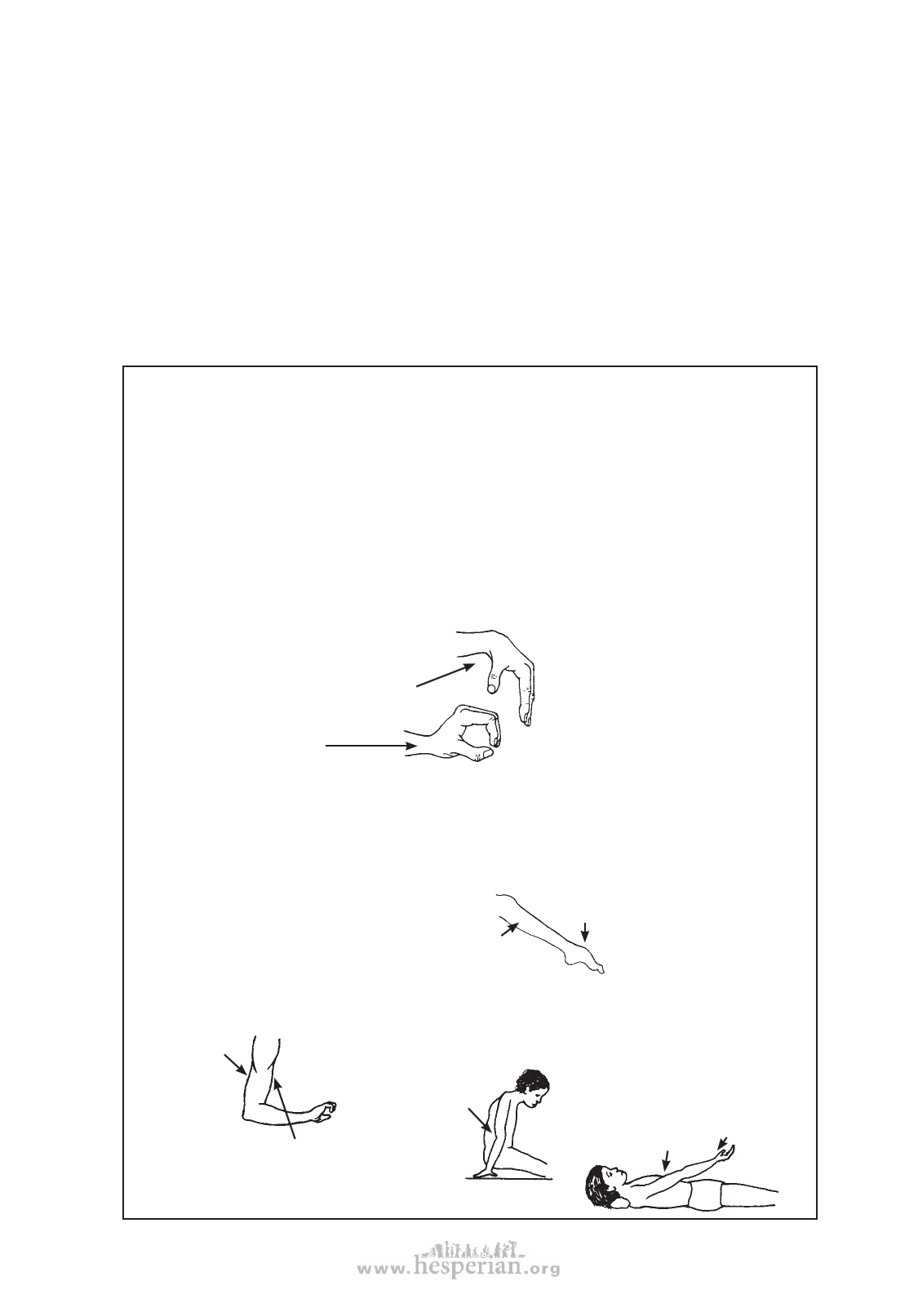
MOVEMENT AND EXERCISE
SPINAL CORD INJURY 183
Do range-of-motion exercises for about 10 minutes for each arm and leg. In the first
weeks, do the exercises twice a day. Later, once a day may be enough. If any signs of
contracture develop, spend more time and effort on those parts of the body. From the
start, exercises should be both passive (someone else moves the child’s body parts) and
whenever possible, active (the child does it himself).
Range-of-motion exercises should begin with great care the day after the spine is
injured (see Chapter 42). The exercises will help to improve the flow of blood (which
reduces the chance of bed sores), to prevent contractures, and to build the strength of
the muscles that still work. Range-of-motion exercises should be continued throughout
life, when possible as a part of day-to-day activity.
CAUTIONS:
• Until any breaks or tears in the spine have healed (6 weeks or more) exercise
must be very gentle and limited, with smooth motions and no jerking.
• Especially at first, take great care that exercises do not move the position of
the back and neck. Start with feet, ankles, hands, wrists, and elbows.
• If exercises trigger severe muscle spasms or jerking, do not do them until the
break is healed.
• Do not use force in trying to get the full range of motion, as joints can easily
be damaged.
• For quadriplegics often it is better
to stretch the fingers only when
the wrist is bent down like this,
This way enough contracture
is left to be useful for taking
hold of things. Although the
fingers lack movement by
but not when it is bent
back like this.
muscles, they close around an
object when the wrist is bent
back.
If possible, get instructions from an experienced physical therapist.
• Try to keep the full range of motion of all parts of the body. But work most
with those joints that are likely to develop contractures, especially:
• paralyzed parts that tend to hang
in one position, such as the feet,
muscle
shortening
foot hangs
Prevent this through
exercises (see p. 383) and
by supporting feet (p. 184).
• or, joints that are kept straight or bent by spasticity or by muscle imbalance
(see p. 78). For example:
In quadriplegia
the muscles
that straighten
the elbow
are usually
paralyzed,
while the muscles that bend the
elbow stay fairly strong. These
muscles keep the elbow bent, and
in time they shorten so that the
arm can no longer straighten fully.
It is important
that the arms can
straighten until
they bend
backward a
little—which
is the only
way he can
lift himself
with his
arms.
For this reason, straight arm
positioning and early range-
of-motion exercises for the
elbow are essential. While he
is still kept lying down, teach
him to straighten his elbows
by turning his hands up and
then lifting his arms.
disabled village children